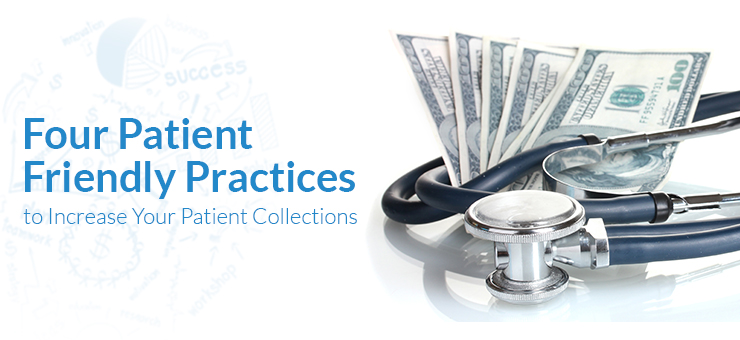Consider how a patient feels when they can’t pay your statement. Most will attempt to avoid your reminders and phone calls, and might avoid coming back to your practice altogether. So not only have you not collected what you’re owed, but you’ve also lost the patient.
Having a patient friendly collections process for your patients is essential to continuing proper care, and maintaining your existing patients. We’ve listed a few simple suggestions that will help you engage your patients in a friendly and inviting manner, which should help to get the statement paid while retaining the patients.
Have a financial policy and use it consistently. Too many practices don’t apply their policy consistently. Yes, there will be exceptions, but they should be few and far between, and when they do occur, the financial policy should be updated to address that particular exception in the future.
Have the patient conversation early. Start the payment discussion as early as possible in the patient relationship. Ask yourself, “How early in the patient relationship can we have the financial conversation?” For existing patients, NOW would be a good time to remind them of your financial policy. Display your financial policy prominently in your waiting room. You might also print it on the annual privacy statement the patient signs. Some practices print their financial policy on every patient statement or insert it on a brightly-colored piece of paper when sending patient statements.
Ask for a commitment. Asking for a financial commitment sounds uncomfortable to many in healthcare but think about this: What other business can you walk in and out of, having received a product or service, without some sort of financial commitment? Many doctors think of themselves as a charity or ignore the business side of their practice, but you can’t survive with that mentality anymore. Your practice has to meet payroll, invest in capital improvements, and keep the lights on, just like any other business. Without collecting all of the patient fees owed, it will be impossible to keep the doors open. Insurance reimbursements will no longer pay the expenses of the practice. How can you ask for a financial commitment in a way that seems reasonable to the patient without putting undue pressure on him or her? Gather your team and discuss ways to present the business reality without alienating your patients. Recent studies show that paid-up patients come back to their doctor, but debtors don’t. Once you find the right approach your practice will enjoy increased patient loyalty and decreased patient receivables.
Use the right tools to enhance patient collections. There are tools that facilitate an effective patient-friendly collection environment. You may already be using enhanced billing statements, soft collections, discounts, and other methods to speed payments. However, experience shows that “more of the same” has diminishing returns. One of the greatest weaknesses of these methods is that the patient is still in control of when he or she pays the bill. But there is a tool that will put you in control of when you get paid by the patient. It would be well worth your time to investigate card-on-file and automated payment plans to assure timely and cost-effective patient collections. Both of these methods save the patient the hassle of remembering to write a check or make an on-line payment. You’ll reduce your billing expenses, your patient receivables and your stress!
Since paid up patients return for more appointments, finding the right mix of payment policies and practices is crucial to your practice’s health.

Join the Discussion!